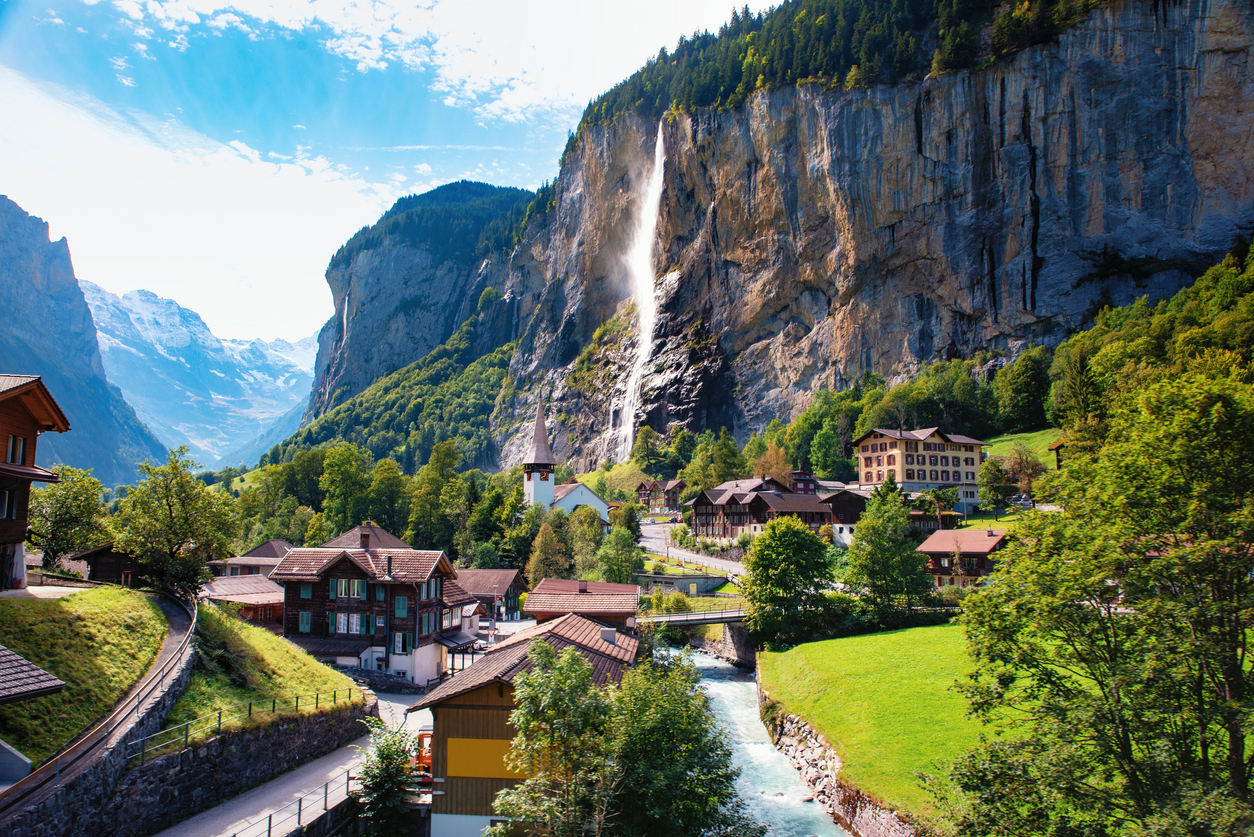If you close your eyes and imagine the Swiss Alps, chances are high that you’ll conjure up images of snowcapped peaks towering over sweeping valleys carpeted in emeraldine hues of grass and clover. You might even picture a few chalet-style homes, crowned with wooden roofs that are steep enough to keep snow from collecting on the darkest winter days. Maybe your mind’s eye will show you a small herd of cows, each with a heavy bronze bell around her neck, or a cuddly Saint Bernard sitting mellowly on a rocky butte.
As cliché as all of this may sound, the Swiss Alps are really as enchanting as Hollywood likes to portray, with beautiful old architecture, humbling resplendent mountain peaks, and—you guessed it—plenty of cows (in fact, the tradition of high-altitude grazing is responsible for some of Switzerland’s finest cheeses).
Still not convinced? Take a look at these 10 beautiful villages in the Swiss Alps and see for yourself!
Visperterminen
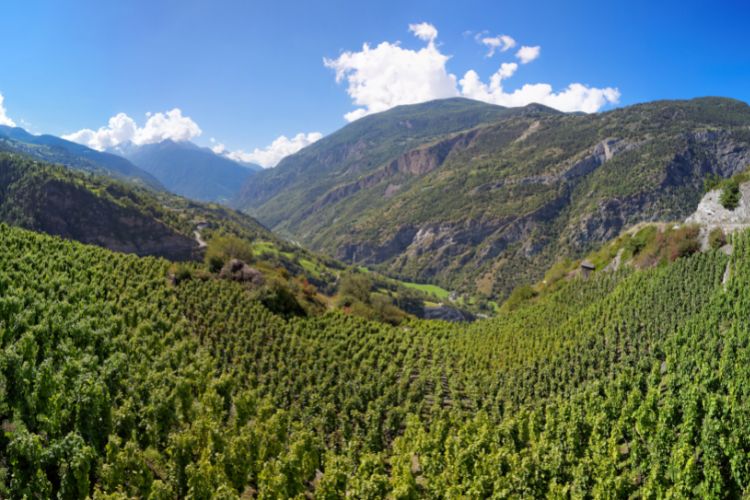
The gateway to the Visper Valley, this village offers beautiful views of the Bernese Alps and the Valais, as well as easy access to some of the region’s finest mountain resorts. Many people come to the region to learn how to ski and snowboard, or to brave the 7-kilometer-long sledding slope that runs from Giw to Visperterminen. Oenophiles won’t want to miss the chance to visit the local vineyard, which also happens to be the highest in Europe, with its clay-and-sand terroir that’s ideal for growing Savagnin blanc varietals used to make the village’s own Heida Visperterminen.
Grimentz
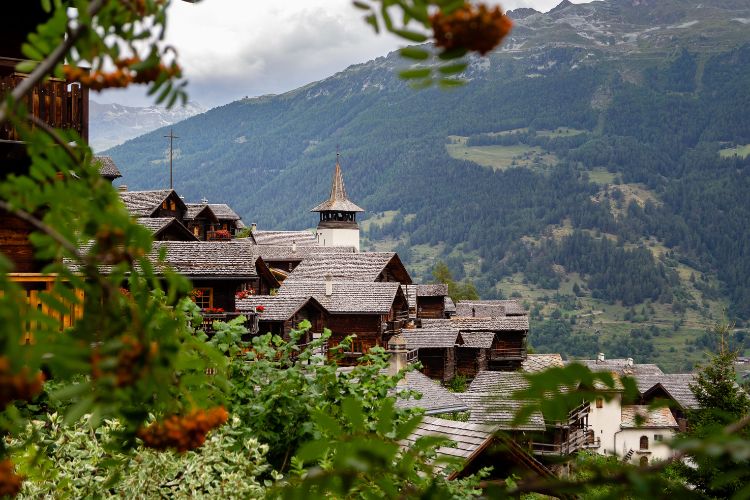
With its cobblestone-lined alleys and wood-framed houses adorned with colorful boxes of vermillion-hued geraniums, Grimentz very much fits the image of a picture-perfect Swiss village. In the heart of the town sits the 16th-century Burgher House, where you can try a special glacier white wine aged in larch-wood barrels.
Andermatt
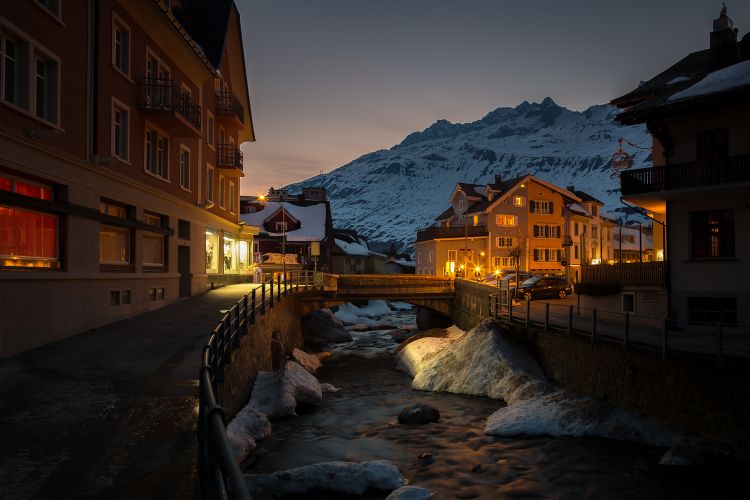
Situated in the Ursern Valley, the village of Andermatt is a well-known base for skiing the nearby slopes of Gemsstock. Other popular snow-season activities include Nordic skiing, snowshoeing, and sledding, while the summer months are ideal for long hikes up to alpine passes. If you visit between June and October, make sure to stop by the nearby Sasso San Gottardo, a cave fortress turned museum next to the Gotthard Pass.
Mürren
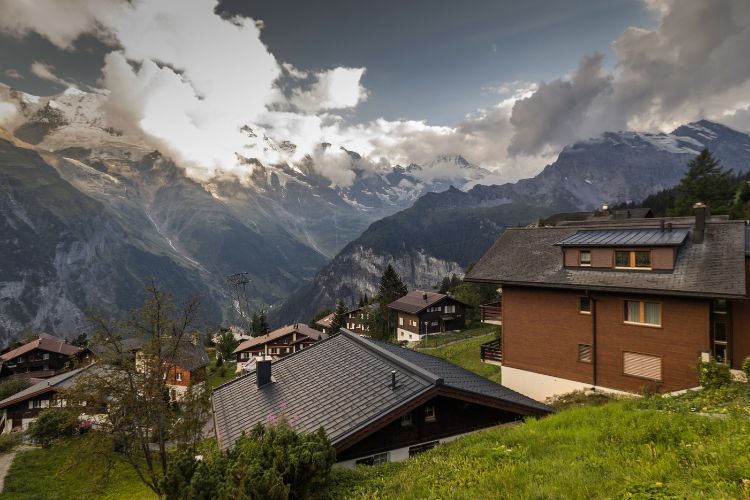
Situated below Schilthorn in the Bernese Highlands, this small, car-free village is a great place to get away from city life—no matter the season. Like elsewhere in the Swiss Alps, snow sports are wildly popular in the winter, while summer brings with it lots of opportunities for long hikes. Feeling particularly adventurous? You can brave a via ferrata (somewhat akin to a hybrid between rock climbing and hiking) route to Gimmelwald, about a mile and a half away. Note that cars aren’t allowed in Mürren, and the only way to get to the village (besides your own two feet) is to take a cable car to Lauterbrunnen-Mürren and then hop aboard a narrow-gauge mountain railway train.
Gimmelwald
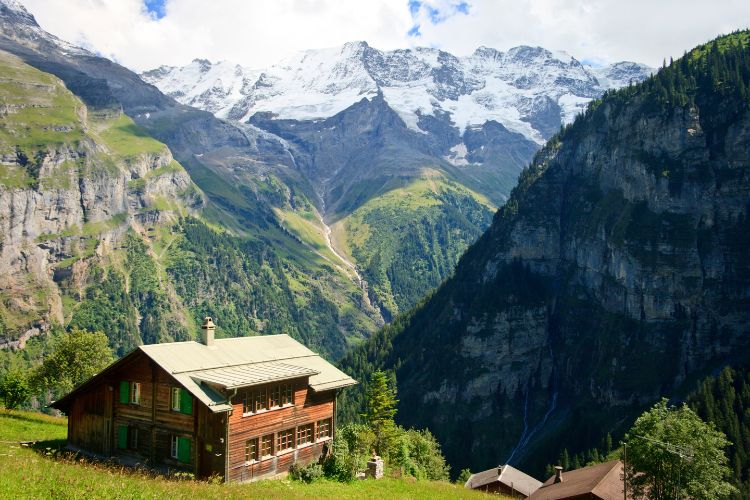
Next to Mürren, Gimmelwald is another car-free beauty and the gateway to the Swiss Alps Jungfrau-Aletsch, a UNESCO-protected area. This adorable village not only offers gorgeous views of the surrounding landscape, but also lovely little homes, guesthouses, and mountain restaurants, all with quintessential alpine architecture. Want to bring something home? You can stop by the Honesty Shop at Hotel Pension Gimmelwald, where all goods are sold on the honor system, with no cashiers in sight.
Weggis
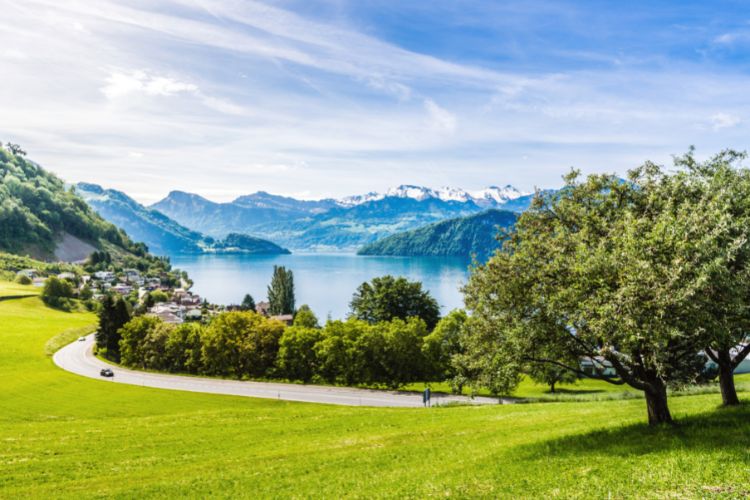
Sometimes referred to as the Riviera of Switzerland, this small resort village on the banks of Lake Lucerne is an excellent place to go if you want to experience a taste of the alps but don’t have time to make the journey up to high mountain passes. Weggis is around a half-hour drive or a 45-minute boat ride from Lucerne, and is just a short cable car ride away from the Rigi massif. The hiking here is fantastic, with options for all levels, including the Path of Mark Twain, a 6.7-mile hike that the American author himself braved while spending time in the area.
Sils
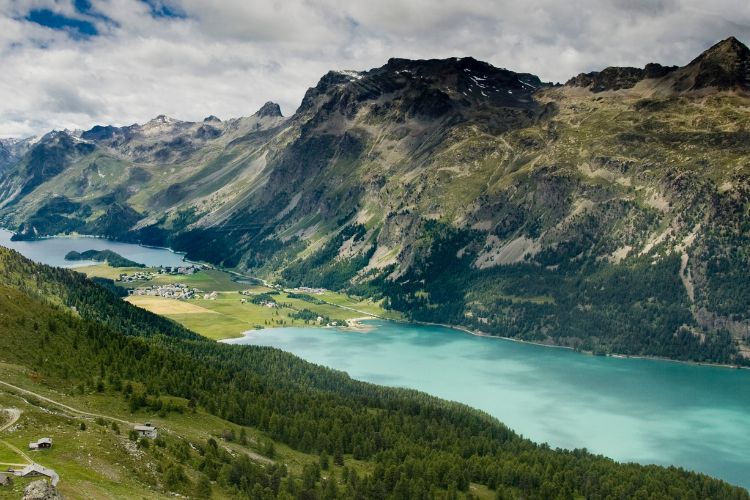
Overlooking Lake Sils and Lake Silvaplana, Sils has long been a popular place of repose. This high-altitude community is a gorgeous place for strolling and relaxing—in fact, philosopher Friedrich Nietzsche found the village enchanting enough that he opted to spend many summers here. Nietzsche likely played a significant role in popularizing the town, referring to it as “the charming village on earth.” His former summer residence is now a museum and hotel and is one of many cultural attractions, along with the Sils Museum, which has an exceptional collection of works by Swiss painter Andrea Robbi.
Muggio
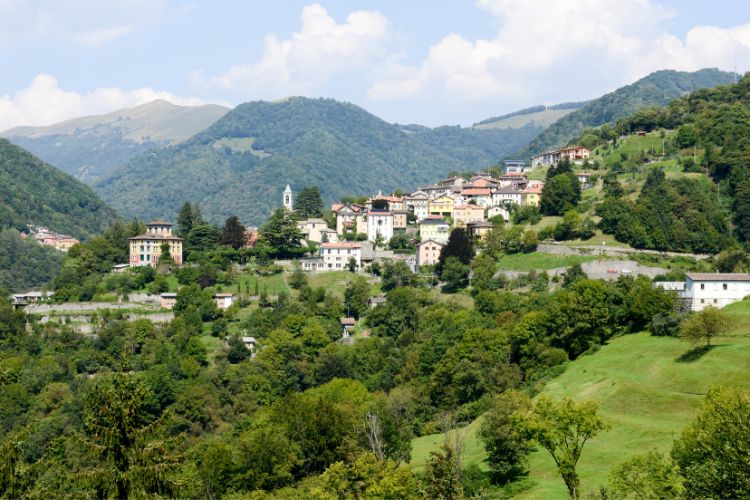
Part of the Breggia municipality in the canton of Ticino, this gorgeous village offers a perfect mix of exquisite mountain scenery and pretty architecture. It’s an amazing place to visit if you’re interested in living history; the Ethnographic Museum of the Muggio Valley has done a stellar job of preserving much of the region’s cultural heritage, including an old water mill, a historic dairy cooler built of stone, a chestnut storehouse, and nearly a dozen churches.
Kandersteg
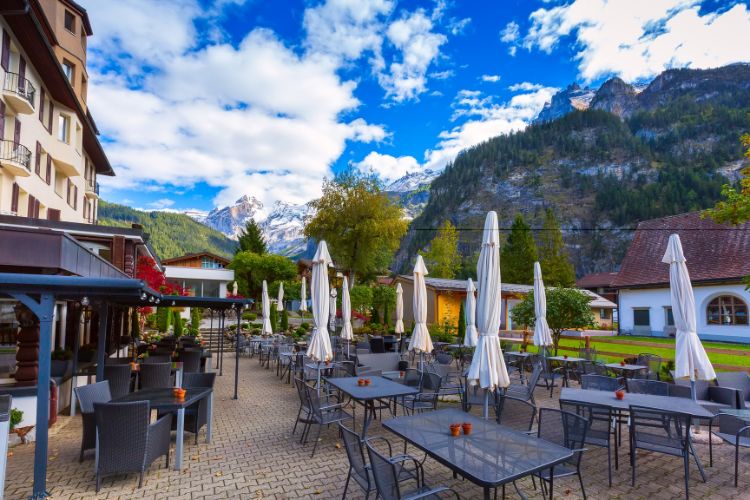
If you’ve come to Switzerland to hike, consider making Kandersteg your base. This municipality in the Bernese Oberland is the starting point for some of the best routes in the region, many of which pass through high-mountain passes with panoramic views. It’s also worth taking a gondola ride up to the ridiculously gorgeous Lake Oeschinen, part of the larger Jungfrau-Aletsch-Bietschhorn UNESCO World Heritage Site.
Lauterbrunnen
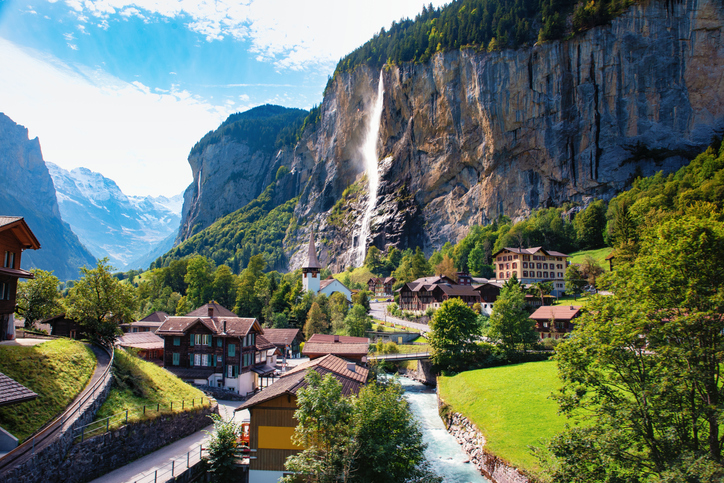
Waterfalls take center stage in this valley village, the name of which translates to “many fountains.” There are 72 waterfalls in the area, the best-known of which, Staubach Falls, is visible right from town. While Lauterbrunnen is gorgeous year-round, it’s worth visiting in the summer, as this is the only time of year when you can visit the nearby Trümmelbach Falls, the largest subterranean waterfall in all of Europe.
You are reading “The Most Picturesque Swiss Villages to Visit” Back To Top
More Switzerland travel guides and inspiration: Wine tasting Lavaux’s terraced vineyards, Swiss wine and wine regions
